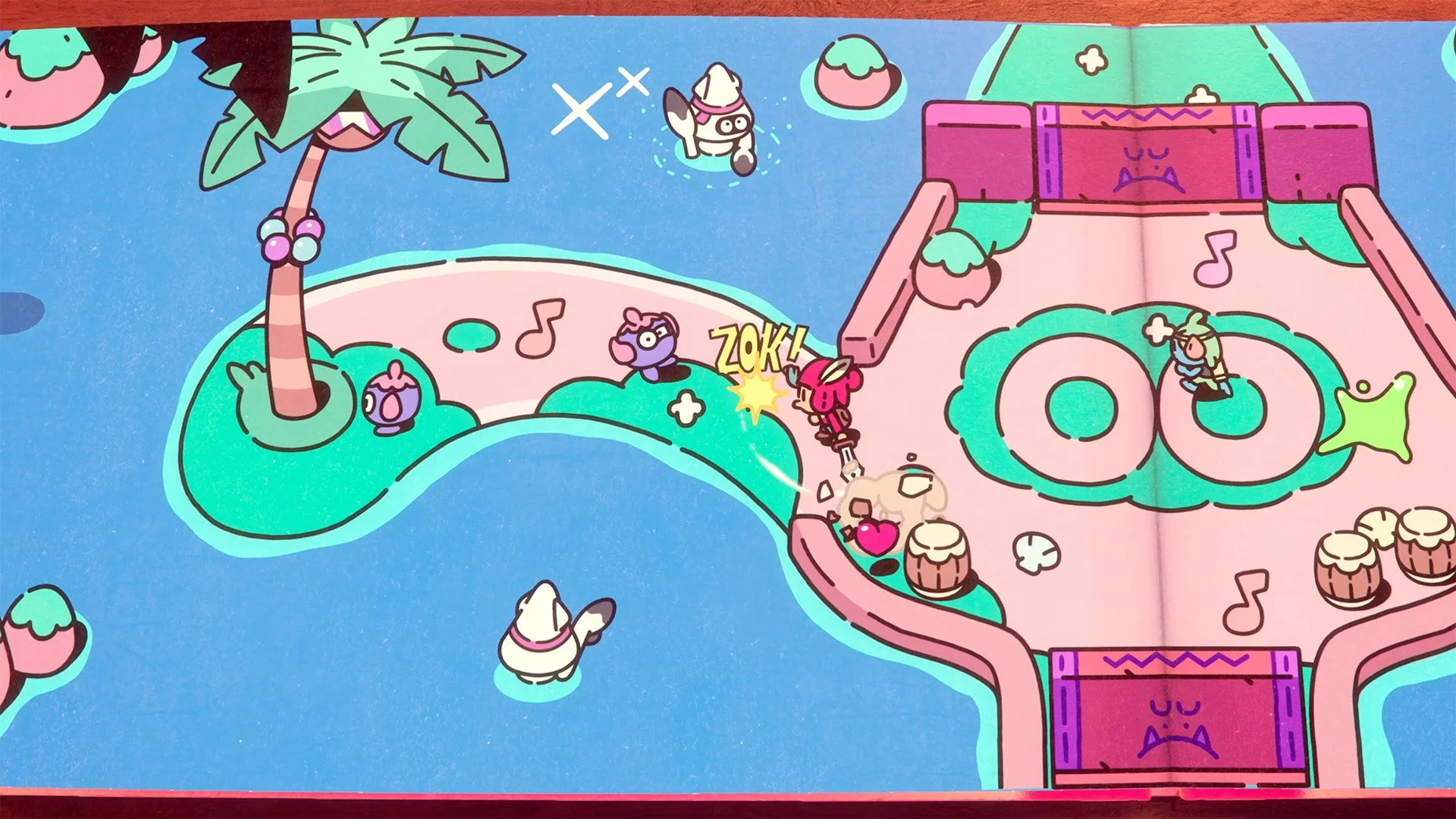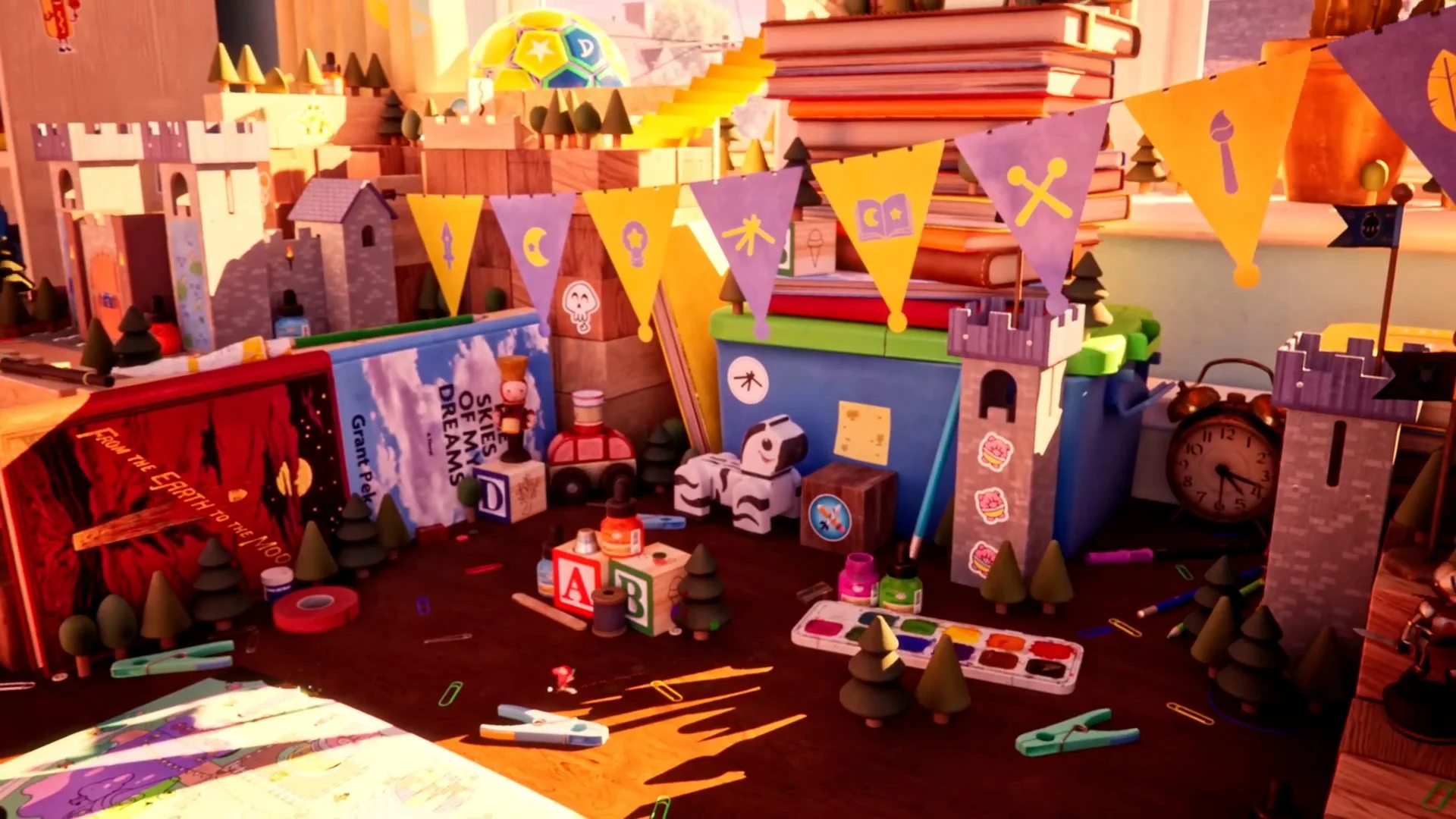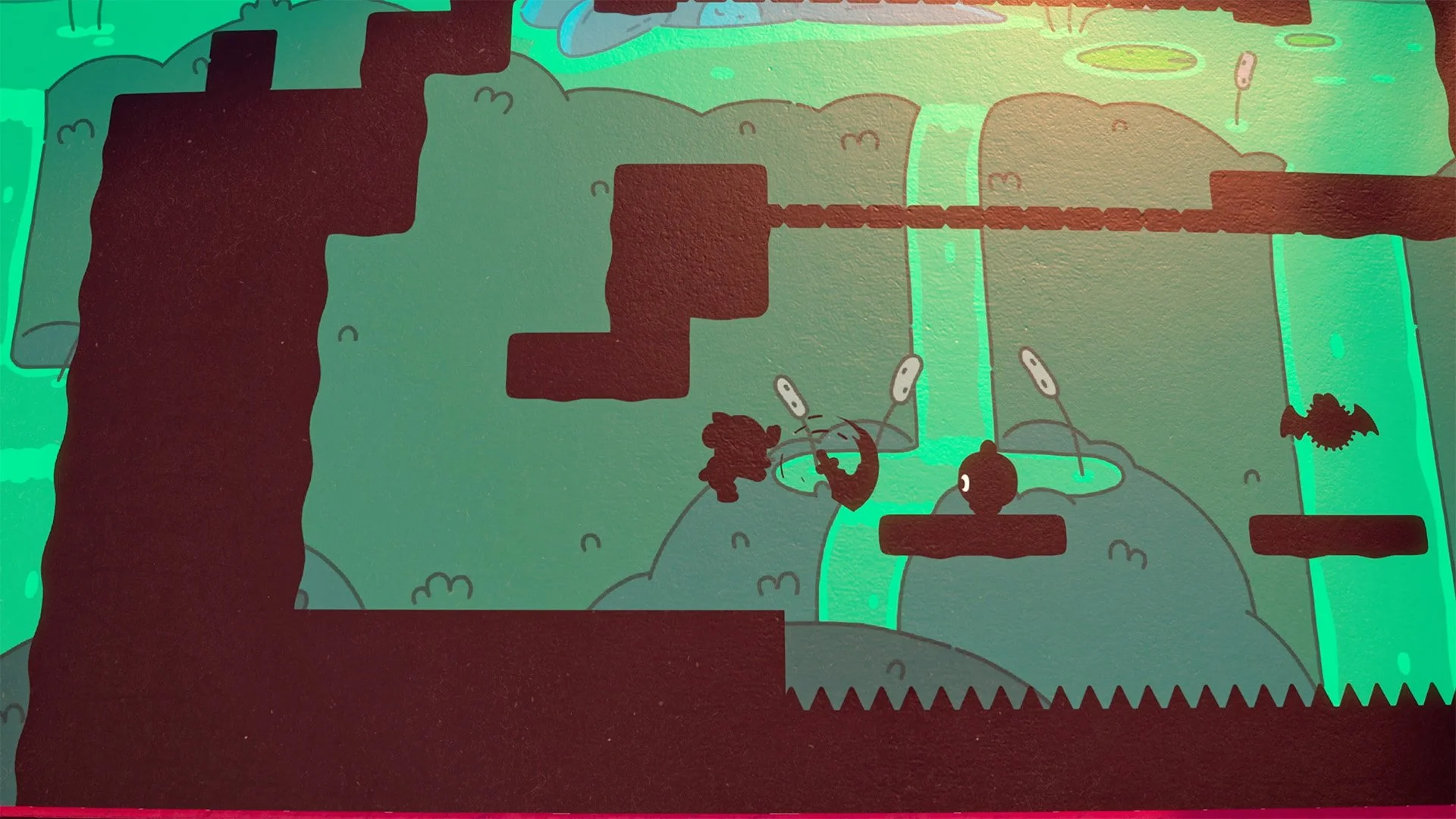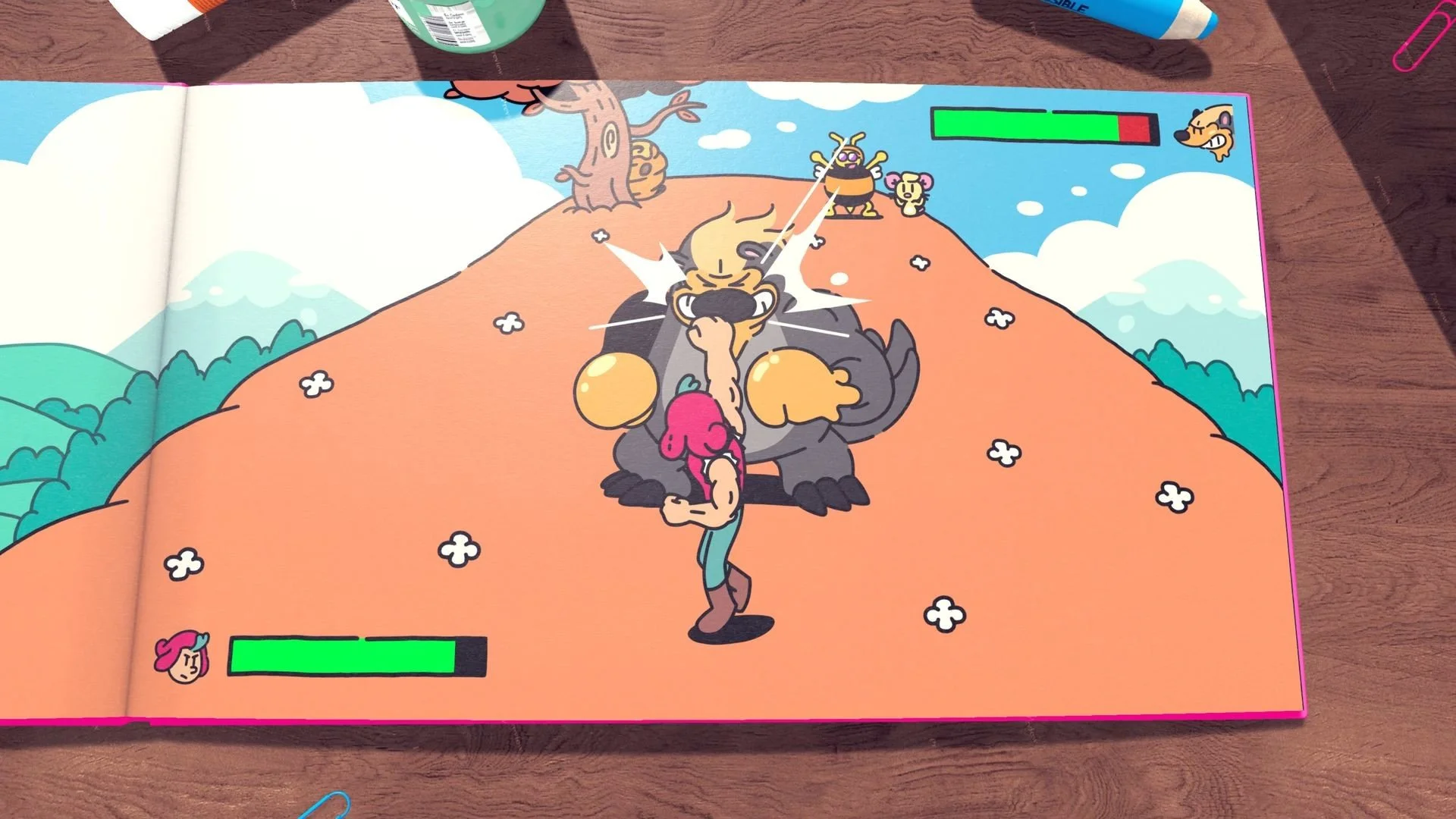From pixel to page.
We’ve often seen the storybook concept played out across various forms of media. The Plucky Squire; however, takes that idea one step further. As you navigate a very real book, set atop a very real desk, flipping through its very real pages, and even closing or tilting it to solve puzzles, the young hero within its pages will also navigate the real world, all to stop an evil sorcerer from taking over both worlds.
Ever since its reveal, I’ve been looking forward to The Plucky Squire. This is the debut game from All Possible Futures. While it can sometimes fail to take full advantage of its setting and some of its more interesting mechanics, it’s a wonderfully crafted tale that is as visually interesting to play as it is to see unfold.
The Plucky Squire takes place in the land of Mojo, a land full of color and creativity, ruled by the beloved Queen Chroma. From Inkwood village to the Sonnet Swamps, and even to the peaks of Trarrg Mountain, the land of Mojo has been saved time and again by one hero, Jot, the Plucky Squire. However, while he is the protagonist of this story, every hero needs a villain, and this story has one; Humgrump. However, as Humgrump discovers that since he is the villain and is destined to always lose to the hero, he uses newly discovered magic to cast Jot out of the book and into the real world. Infused with this very magic as a result, Jot uses his newfound power to jump between the real world and his book, even when Humgrump’s powers grow beyond anyone’s wildest imagination.
Stopping Humgrump will take more than just one hero, as Jot will have a few allies who will have his back. There’s Violet, a trainee witch and artist from Artia City who is desperate to prove herself, Thrash, a mountain troll and avid fan of heavy metal, Pip, a mouse with a can-do attitude, and if Gandalf was a DJ, then you’d have the very chill and relaxed Moonbeard who is always down for a good party. While Moonbeard and Pip will be your off-screen, or rather off-page supporting cast, both Violet and Thrash join Jot for the bulk of his adventure.
As the trio discovers that they are characters in a storybook, they will be set on an adventure that differs from the story originally told within its pages. This causes Jot to explore areas of the Kingdom not found during the original tale, essentially going ‘off-script’ to stop Humgrump once and for all. As you visit Tome Tower and see the game’s early events unfold, you’ll then make a visit to the Kingdom of Artia, the Sonnet Swamps, Trarrg Mountain, and Boogie Beach, before the last few chapters have you dealing with Humgrump’s devastating new powers in other notable locations.
As far as the story goes, it follows this scenario right through to the game’s final chapters which felt like the perfect way to build up Humgrump’s power, making him a credible threat, especially one where Jot will need to rely on his allies to see it through. As the story is fully narrated, I was really impressed with how that narration changes at a certain point in the story, allowing the current moments to affect the narration, especially as it is the same voice being spoken, albeit with a different context to the overall story.
While a few parts of the story can feel a few lines too long in certain conversations, especially given the pacing of some dialogue, I still found enough charm from it and its storybook delivery to find the overall adventure pretty engaging. This is also due to a fun collection of secondary characters, many of which grant Jot a new weapon, ally, or piece of equipment to use in certain circumstances, even if they are unfortunately temporary.
Jot’s assortment of equipment and items may be thin, but their use alongside the storybook mechanics does give them a certain degree of depth that makes them at the very least interesting. Your sword has a spin attack, a jumping attack, as well as throwing it out and having it return to you; the latter being the only really decent part of that collection of attacks. You can roll out of the way, but that generally is about everything Jot can do within the storybook. Should you find portals to leap out and into the real world, then Jot can place bombs via a stamp tool upon the book’s pages and cause them to explode or use another stamp to freeze an object or enemy in place.
While you’ll have temporary access to Jot’s fists, a bow and arrow, and an axe, these moments are short and only revisited sparingly. You’ll have a laser rifle and a jetpack in a few moments as well, including such a moment with the game’s best boss encounter. All of these additional moments are fun and do offer up some engaging moments, I just wish there were more of them or that they could be somehow included in Jot’s storybook arsenal.
While Jot will handle about 99% of all combat, both Violet and Thrash do take part in a small handful of moments. Violet does her best Puzzle Bobble impersonation, while Thrash uses his drumsticks to ricochet a few thrown items, against all too similar opponents. These moments are fine, but I will say that Violet’s was the weakest of the two by a large margin, mainly due to the movement feeling a tad stiff.
The bulk of what makes The Plucky Spire’s mechanics shine is through the use of Jot’s abilities outside the book and how they often affect what is going on in the book’s pages. You can flip the pages back and forth to find things you’ve missed, or tilt the book’s open pages to cause heavy objects to slide around. It’s a shame the latter couldn’t have been used to either slide blocks into enemies or cause the enemies themselves to fly all over a room. Even then, this particular feature is only used when it needs to be. Regardless, these moments are very fun, but can become too similar in how they are used to solve puzzles, especially considering the flexibility of other mechanics.
Additionally, Jot has the ability to navigate large environments outside of the book. These vary in their scenario, from tracking down the parts of a rocketship to traversing a large volcano. These moments are used to bookend big moments when Jot will need to track down a new weapon, such as the bomb or time stamp. While I appreciate these areas as they are used to good effect in the game's marketing, I don’t feel they stand out as strong as the game's 2D elements. It’s also a shame that while Violet and Thrash are rendered on the cover of the game in the same 3D art, those assets are never used here as Violet and Thrash remain in the book at all times.
When The Plucky Squire is using the tools and mechanics of jumping in and out of the book to allow Jot to manipulate things within the book, the game shines. There is a vastness of creativity here that makes for a few charming and endearing moments. As mentioned, when the game attempts to be a 3D platformer, it struggles to make those 3D moments have something of their own, often instead having Jot jump into 2D mechanics like moving through a laser grid or the laser gun sections where you move around the rotating side of a bucket or mug. That particular example was fantastic and a stand-out section.
Another part of The Plucky Squire is its puzzles. Now, I’ve lightly talked about some of them already, but the game is very much loaded with them. A particular type that I feel works well, even if the game often simplifies the concept of them, is through finding words in various places around the page and swapping them to change the context of a sentence. Night can become day with the right phrase, water can become ice, or you can make a giant battery turn into a troll. Often, you’ll have to flip back a few pages to find the correct word, making it a scavenger hunt of sorts and adding depth to a pretty engaging system. However, the need of having to go back and find a word is used sparingly and a lot of the fun comes from interchanging words that have no point to the puzzle other than being something fun to do. It reminds me why I loved Scribblenauts so much. Sadly, there is only a small handful of these moments when the game felt ripe to have even more.
When certain pages would have me jump out, use the time stamp tool to lock something in place, tilt the book and have that part remain, to then close the book and have that block transported to the other side of the page, it was puzzles like that where you often used multiple mechanics that really stood out. Throughout the roughly 8-10 hours, you get about half a dozen of those really intricate puzzles. Granted, there are a few dozen more that get close to that, but large chunks of this game sadly go for the bare minimum in what could have been provided, especially when that mixture of multiple systems feels incredible to pull off.
Throughout the game, you'll have small little critters to track down, often hidden behind things that you'll need to use your gifts to discover, or a series of concept art that can be found or bought from a local merchant who continues to show up on the path. It is through them that you'll purchase additional sword attacks as well as increase their damage. These are bought by collecting little bulbs that are found in bushes, or barrels, or by defeating enemies. You'll also find them out in the real world as well.
Apart from having a story difficulty, when even the normal mode is remarkably easy, there is a wide range of accessibility features that can allow anyone to embark on this adventure. From infinite health, to one-shot kills, to assists with jumping and disabling falling platforms or showing hidden portals, these settings can honestly aid in helping those who struggle with even the most simplistic issues, especially extremely young children.
Perhaps the most impressive part of The Plucky Squire is in the game's approach to creating the book itself. The 2D art is great and while I don't think the 3D models really impress, the book itself is outstanding. The black line art and filled sections look accurate when light hits them. As someone who has worked in art before, this attention to detail actually made me gasp. The words also bend at the crease in the middle, and the approach of making everything flat once you have left the page is impeccable. Honestly, while the game is impressive for other things, this is what I'll continue to take from this whole experience. I’ll also add that if Devolver Digital doesn’t look to produce a storybook version of this exact book, using the game’s assets, I’ll be sadly disappointed.
The Plucky Squire has a lot of incredible moments, with a scale of creativity that is often executed well. Unfortunately, the game has lengthy moments where it simply feels like it is going through the motions and doesn’t shine nearly as bright. The 3D sections are nowhere as interesting as the 2D elements, and often fail at using the best qualities of the mechanics to really stand out. All that said, when The Plucky Squire is leaning on its best ideas, it’s a truly engaging and creative title that should be experienced. All Possible Futures’ debut title is often a work of art, with a visual approach that is something special, and real page turner.
Developer - All Possible Futures.
Publisher - Devolver Digital. Released - September 17th, 2024. Available On - PS5, Xbox Series X/S, Nintendo Switch, PC. Rated - (E 10+) - Fantasy Violence. Platform Reviewed - PS5. Review Access - A review code was provided by the publisher for the purpose of this review.


















Jeff is the original founder of Analog Stick Gaming. His favorite games include The Witcher III, the Mass Effect Trilogy, Hi-Fi Rush, Stellar Blade, Hellbade: Senua’s Sacrifice, and the Legend of Heroes series, especially Trails of Cold Steel III & IV.